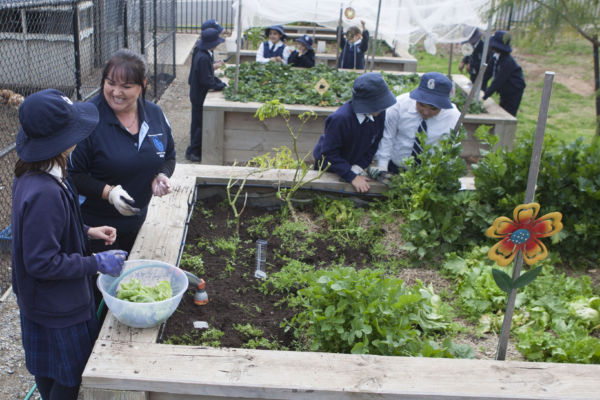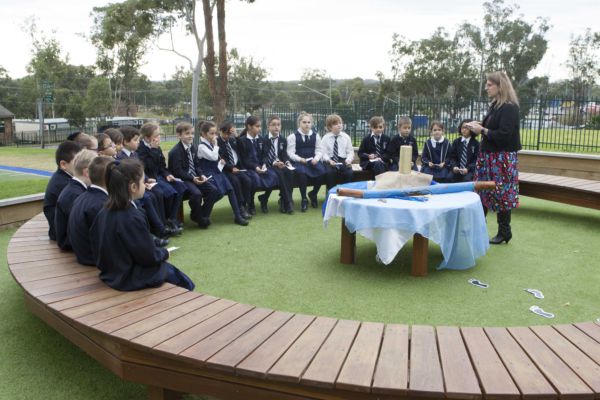Students at Marion Catholic Primary School Horsley Park have the grounds to learn freely. An outdoor classroom, sustainable garden and breakout spaces beside Years 5 and 6 classrooms are giving students within the semi-rural community opportunities to collaborate, experiment, and reflect on content and tasks.
Year 4 students will also add their own design to the outdoor learning spaces available to them when they complete a maths challenge to outfit a lesser-used area as part of the Mathematical Association of NSW 2019 investigating with mathematics competition in November.
“The outdoor classroom helps with collaboration because there is the physical space to be able to sit face-to-face with others and the opportunity for children to work together in large groups,” said Principal Therese Gaunt.
“With our community being semi-rural, the children have grown up outdoors. They have that desire to be part of the environment. It’s second nature to them, so it’s really important that we continue that here at school. The spaces give our students room to be creative and do things that would be impossible in a crowded classroom.”
Year 2 teacher Rita Jones has used outside learning areas for ‘design and make’ activities, research and science experiments. The gardens feed produce to the school canteen and teach students about seasonal planting and composting.
“For me it’s a new experience having the garden beds as well as the chooks and being able to bring nature back into the classroom, or the children to the natural classroom,” Mrs Jones said.
“I like that you have defined spaces for maths, so you can make a point of saying ‘let’s find the perimeter and the area of these things’. If it’s a beautiful day, you can take any lesson you are doing, bring your books and we’ve got that lovely wooden structure now that the children can enjoy.”
Outside it’s quieter, and there’s more space to move around.
Year 3 teacher Leah Nangle’s students run a lunchtime Lego club in the outdoor areas for their peers. It has also been useful for a Science unit on forces and students enjoy reading there.
“We’ve been using the space to test gravity and air resistance,” she said.
“As long as the sun is at the right angle, the students can sit on the logs and read comfortably for their 15 minutes. They know they have to adjust their voice for the conditions outdoors, but that’s all part of learning to read too.”
Student view
Year 5 students share their favourite ways to use their outdoor learning spaces.
Natalia Romeo: “Sometimes during library lessons we come outside to read. In the classroom, there are things all around the walls that can sometimes distract you. I like the circular area because it’s a calm space. There’s nothing distracting you so you can understand more.”
Valentino Libri: “Most of outdoor learning is group work. For maths, we had to make a one-metre box out of newspaper to measure the basketball court, and for science we made a contraption that led up to something. Outside it’s easier to measure.”
Logan Huynh: “Last year for maths we had to find angles in the environment. I like the wooden circle bench. Outside it’s quieter, there’s more to see than in a classroom, and there’s more space to move around.”


